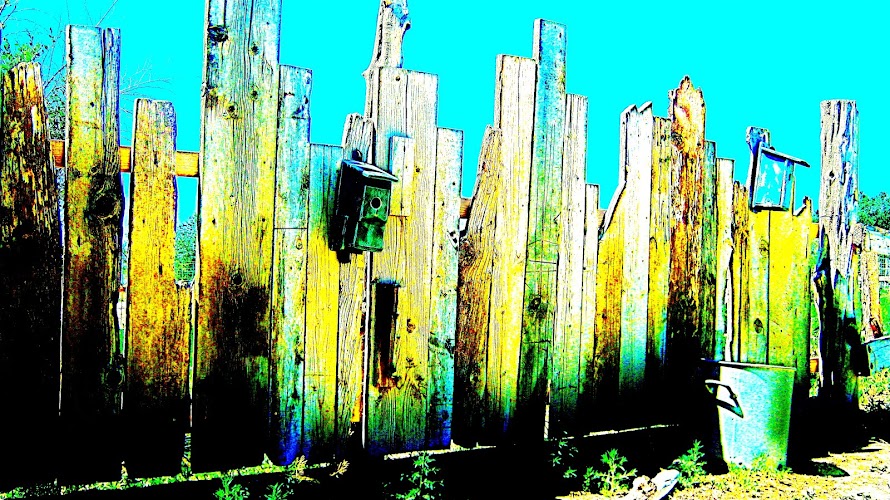Over the past 23 years of raising market gardens and providing for a CSA we have used a lot of cattle panels. We found that they wouldn't hold in our large steers if they really wanted to get out . And the rams would just beat them with their massive horns until there were holes big enough to get out of so they could join the ewes. However, we still purchased quite a few panels for our farm. They do keep the goats in and allow for feeding outside the fence so feed is not trampled and wasted. Also a buck cannot climb over them if you stack them two high creating a sturdy 10 foot high fence. But generally we use them through out the gardens.
Three or more panels arched, tied together, staked with t-posts, and covered with plastic make a nice little green house. I also use these arched panels over my lettuce beds covered with black shade cloth to extend my harvest. One of the best uses I have found is to bend the panel
lengthwise into a small arch and cover with plastic. I use these tunnel covers placed end to end over all my tender vine crops, cucumbers, melons etc. this is the only way I can extend my season long enough to get a harvest. Remove them when the weather has warmed sufficiently. Put arched panels in an area sheltered from drying winds , growing vine crops or pole beans up them can save space in your garden and allow for easy harvest as the fruit hangs down inside the arch.
notice the panels arched on the right and left sides of this photo
this area in one of my gardens is protected from wind on 3 sides
pole beans were grown over the panels
a thick layer of straw was placed under one of the arches
it made a wonderful, cool spot for the kids to read
...........sadly the kids have all grown and left home
 |
| feeding the goats on the opposite side of the panel cuts down on feed waste |
we have also used them for:
*wood racks on a trailer
*compost containers
*planting potatoes in straw
(as a round container and also laid flat holding down the straw over a large block planting of potatoes)
* cut in half and folded, not arched the panels for a 4' high trellis
(leave 4 feet open on end )
MAKE a salad garden underneath, cucumbers on one side, tomatoes on the other and lettuce, spinach, carrots and chard planted under the trellis. Cover with plastic to give the vines more heat in the early spring. The vines of the cucumbers shaded the soil to allow for lettuce harvesting all summer. Only place one panel ( not side by side) so you can access the middle easily from both sides......place several of these throughout your garden....
make a pasta sauce themed trellis with tomatoes, plant basil, parsley and other herbs underneath
summer squash plants do well grown up them and plant melons or cucumbers underneath
I plant these mini patches so the side of the frames are placed facing the east and west which allows the plants on the inside to get plenty of southern sun.
*covered panels with plastic and duct tape for quick cold frame covers placed over a double row of hay or straw bales, make these as long as desired. When it warms up during the summer, the bales are opened and spread as mulch along the plants.
LARGE GREEN HOUSE MADE WITH CATTLE PANELS
*we made a large 26' by 60' green house using 2 panels joined end to end with staples on a high center wooden beam, supported, by tall cedar posts. ( We used 10 sets of 2 panels to make it 60 feet long). The panels were also supported and stapled in the center, with more wooden beams, on both sides and then stapled them to large cedar posts laid along the ground. We covered it with fiberglass and boarded up the ends. Using a good quality 3/4 plywood the wood was cut to the shape of the arches and the edge of the panel stapled to the plywood. Framed in a door and made a screen door to fit. We had this greenhouse for many years until one of our renters tore it down. Sorry it was about 20 years ago, I don't have a photograph so I tried to do a sketch for you.

During the winter my Angora Rabbits were moved into the greenhouse. They helped heat the structure. Heavy mil plastic was wrapped around the support beams and stretched across the top from side to side to form a green house with-in a green house. A heat lamp was hung inside the inner green house and plants were grown all winter. The rabbit droppings were spread through out the green house and tilled in at spring time. We built this when only fiberglass was available. I would not recommend using it because it did not hold up in the wind. The corrugated plastic you can buy now at home improvement stores is my choice for green houses or sun rooms.
Nope, cattle panels are NOT just for COWS.
What have you used cattle panels for?
HOWDY NEIGHBOR!
Thanks for stopping by,
click here to be directed to our home page
Kick off your boots, sit a spell and read about the adventures on our little
organic vegetable farm.























